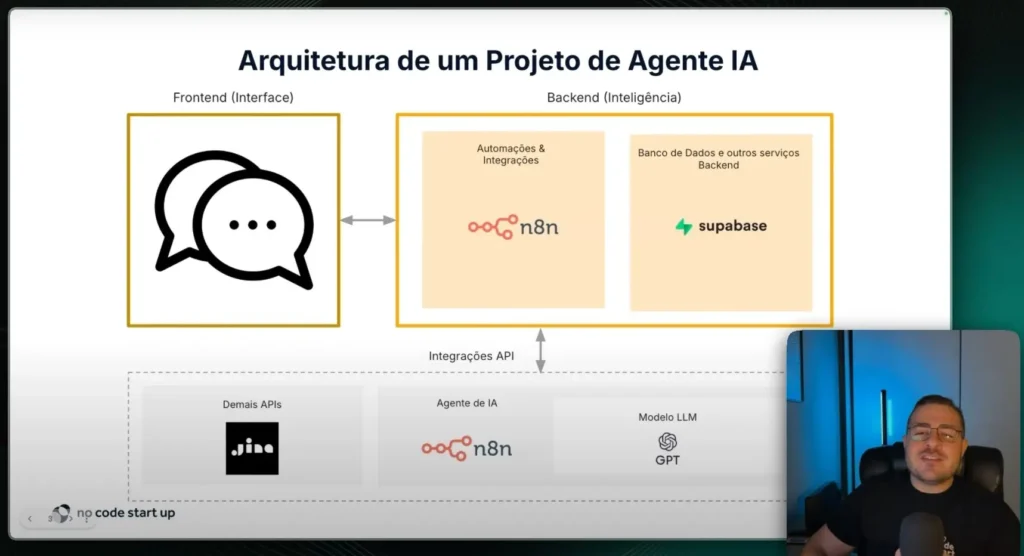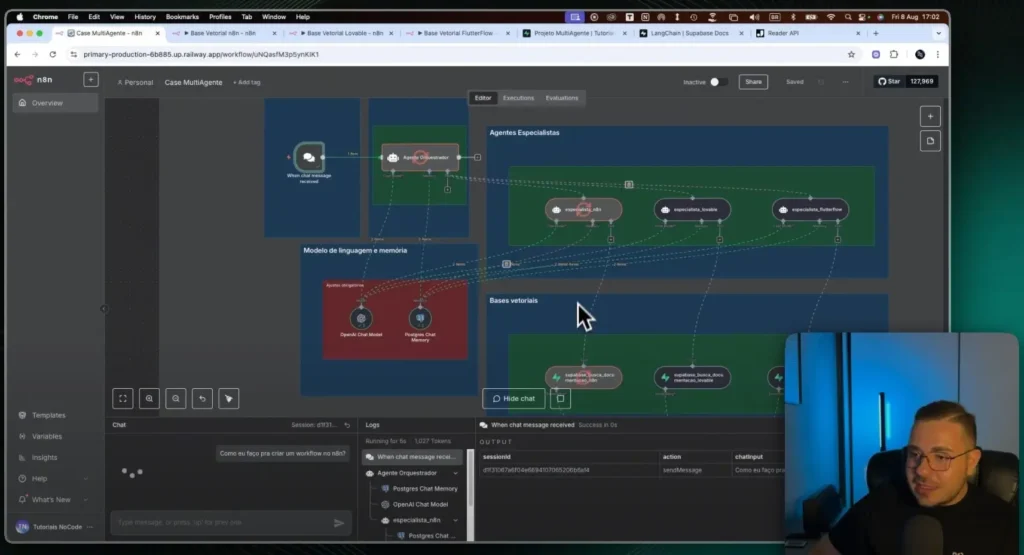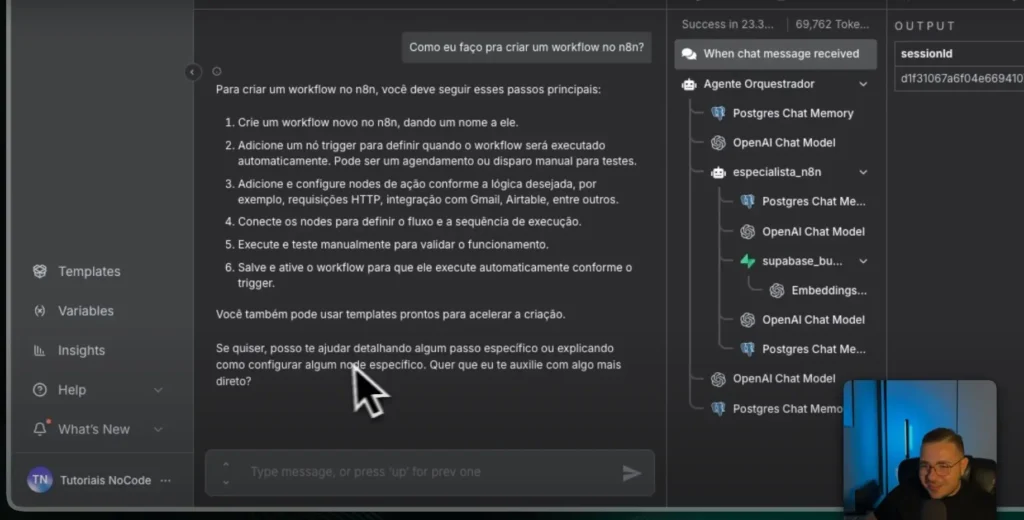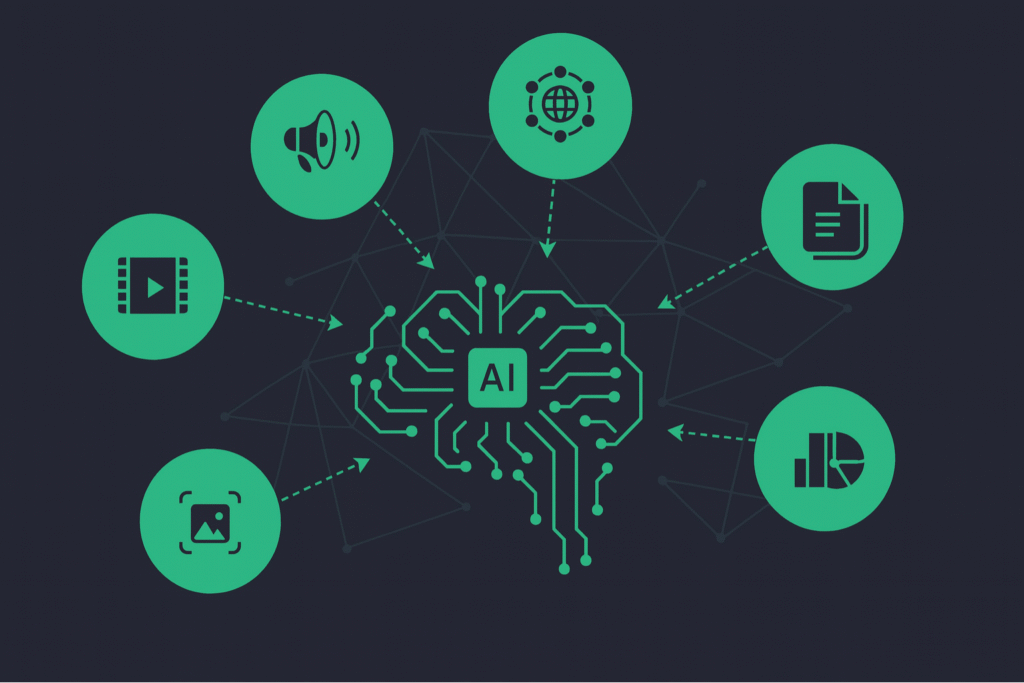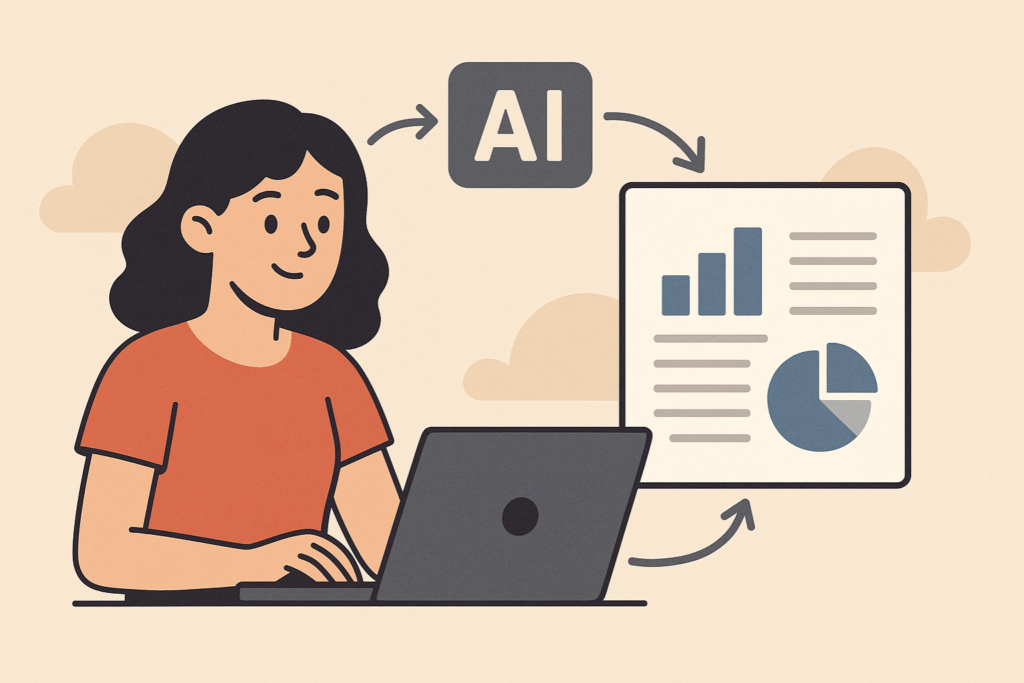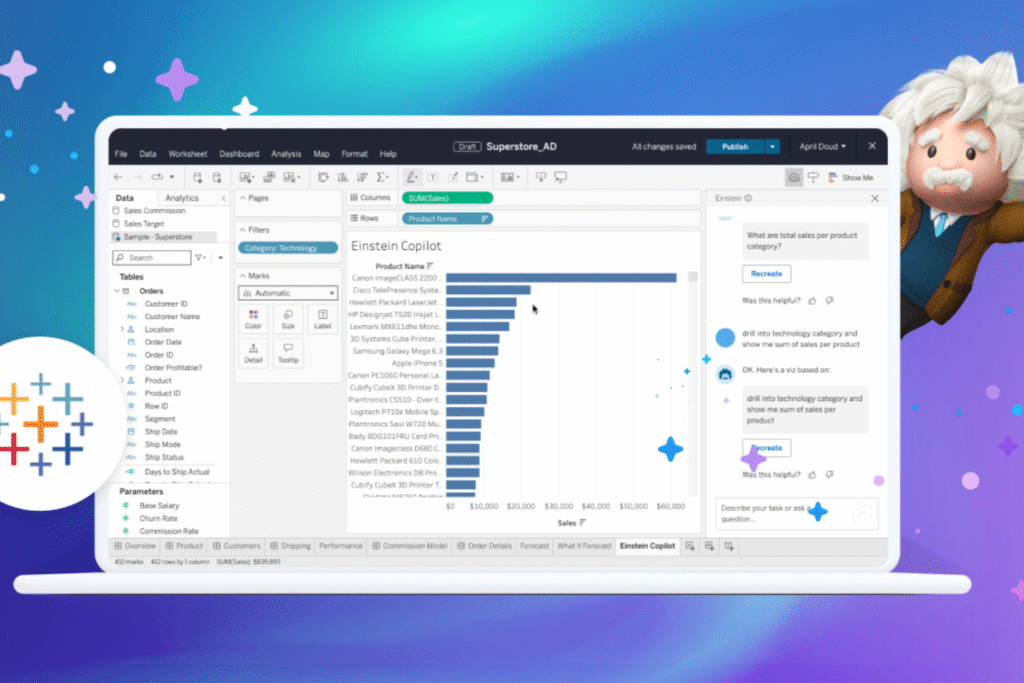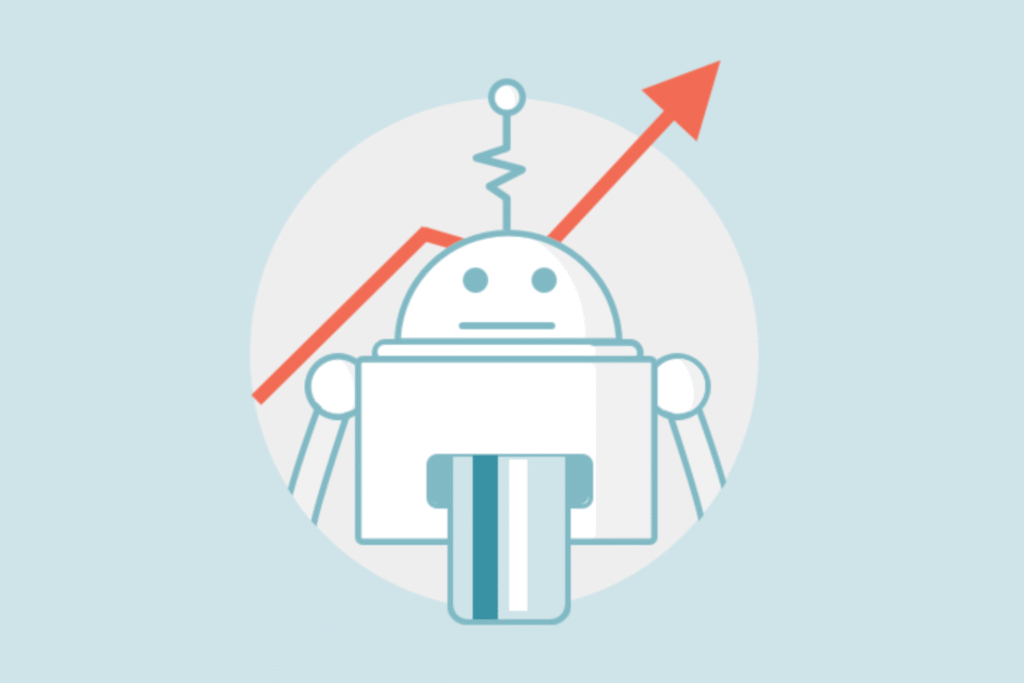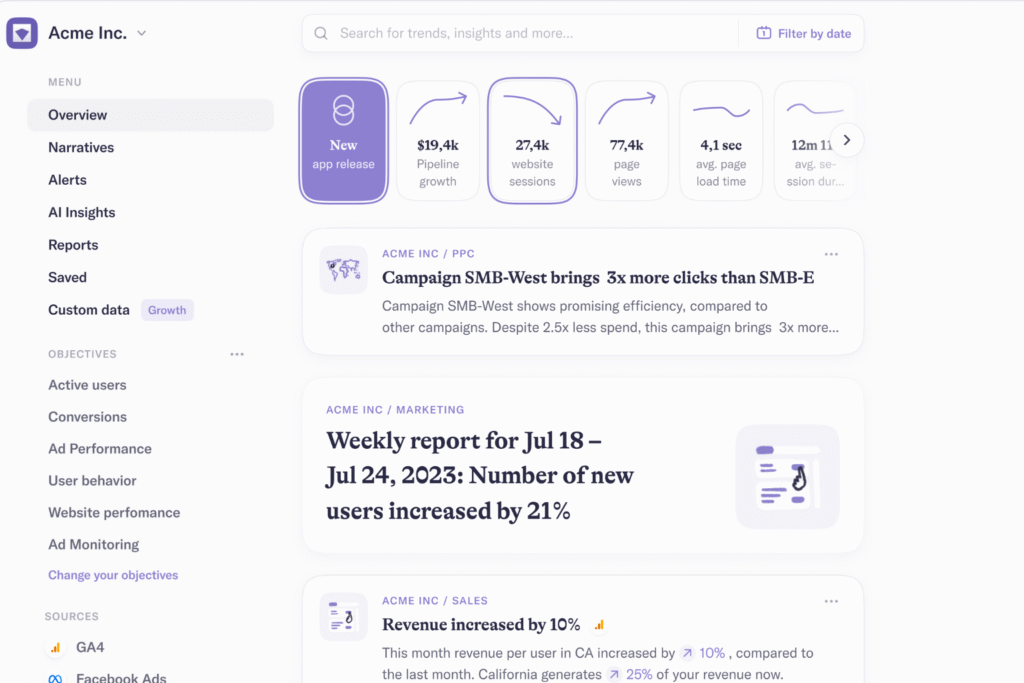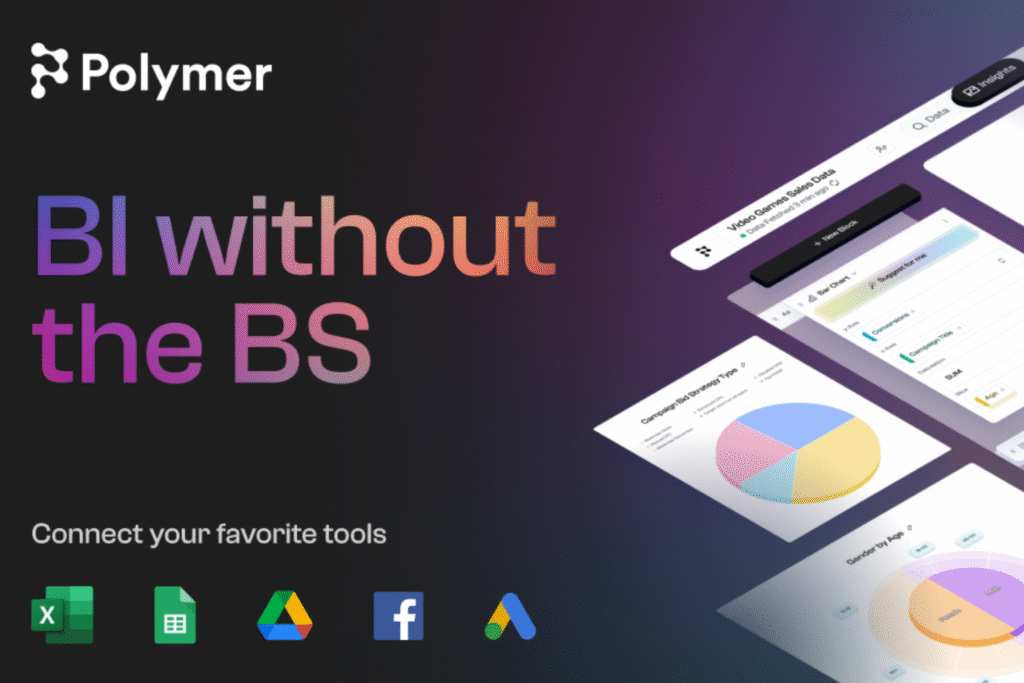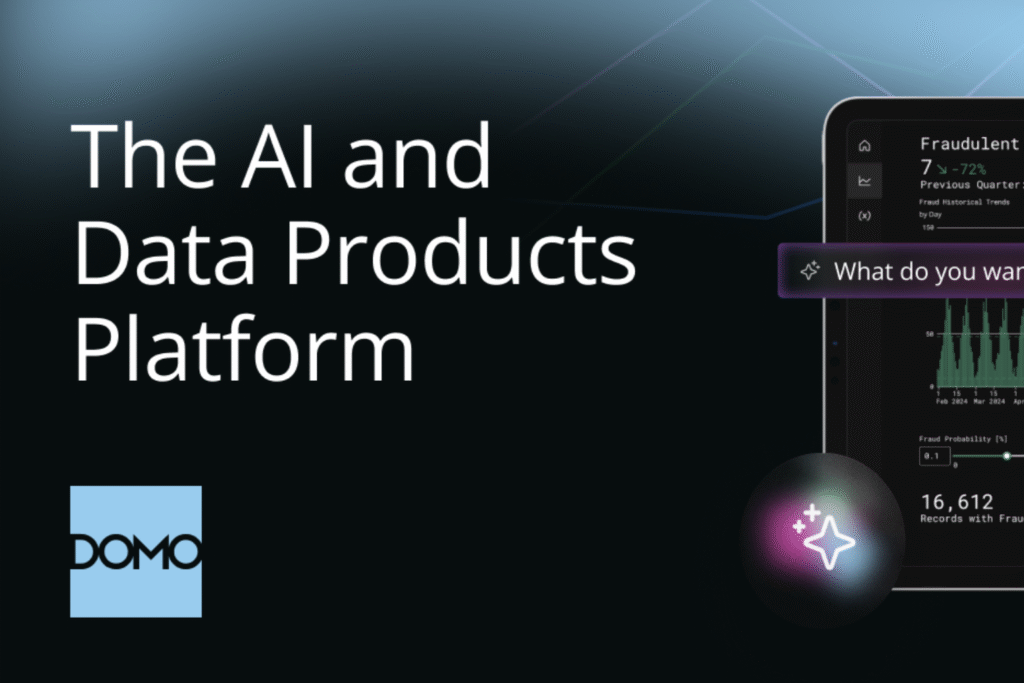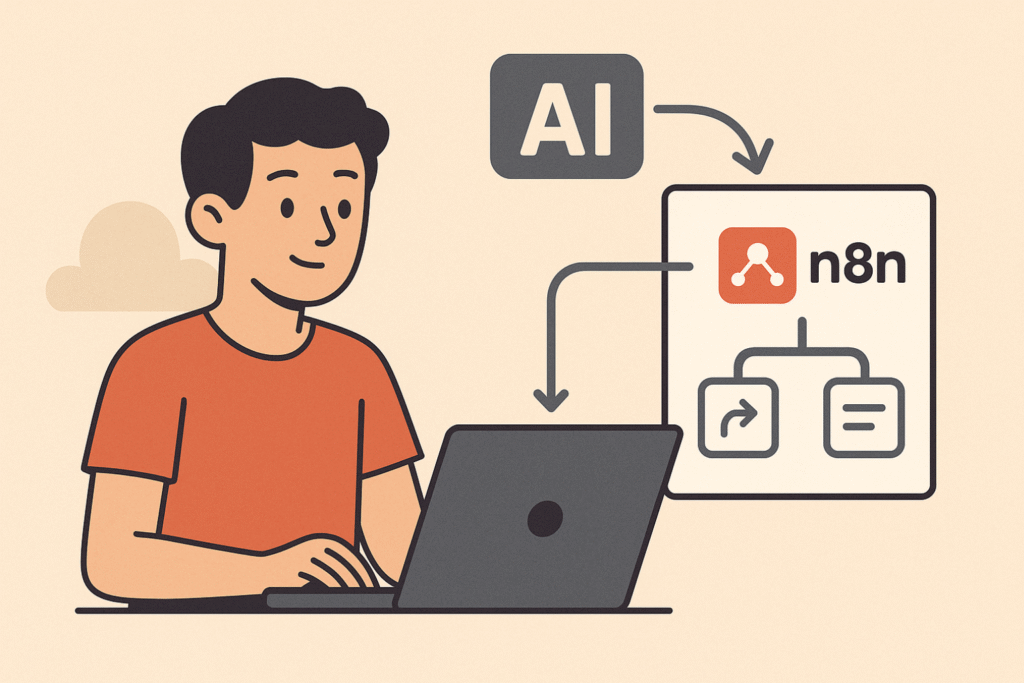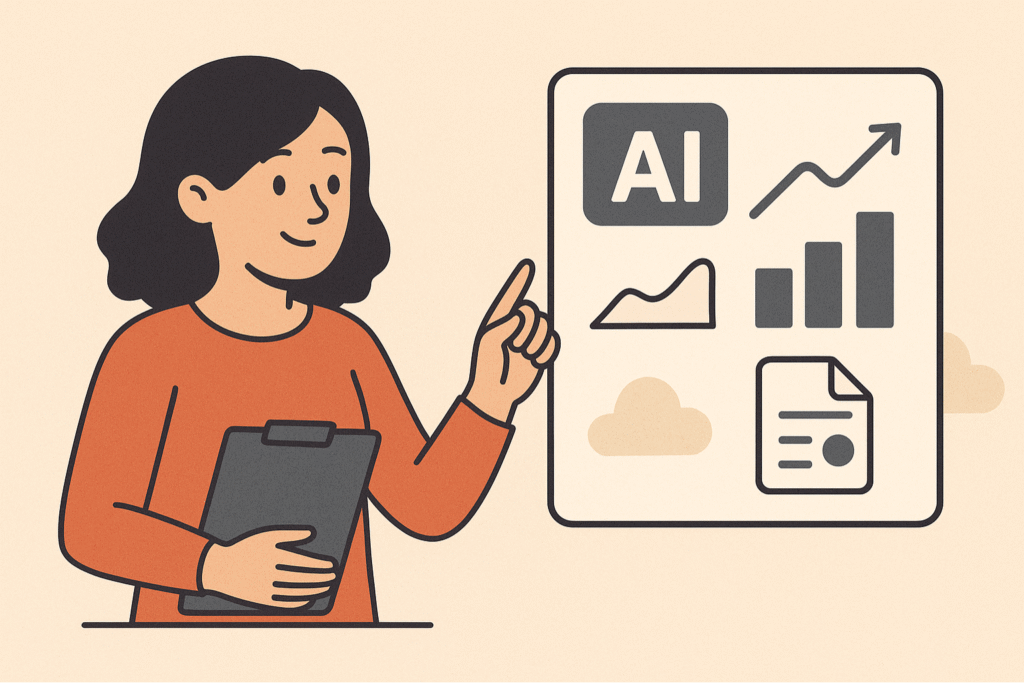Artificial intelligence is a branch of computer science that creates systems capable of simulating human abilities, such as learning, deciding, recognizing patterns and interacting with natural language.
It is already present in our daily lives, even when we don’t realize it. For example, Instagram uses algorithms based on this technology. Netflix uses AI to recommend movies and series that match your taste.
These are just a few examples of how AI is changing the way we think and relate to the world.
But how does it work, what is it capable of doing, what are the most used types, what are the most popular solutions in the world and how AI integrates with no-code programming?
If you want to know more about the subject and understand how AI can be an ally for your success as a application developer, continue reading this content!
Table of Contents
What is Artificial Intelligence?
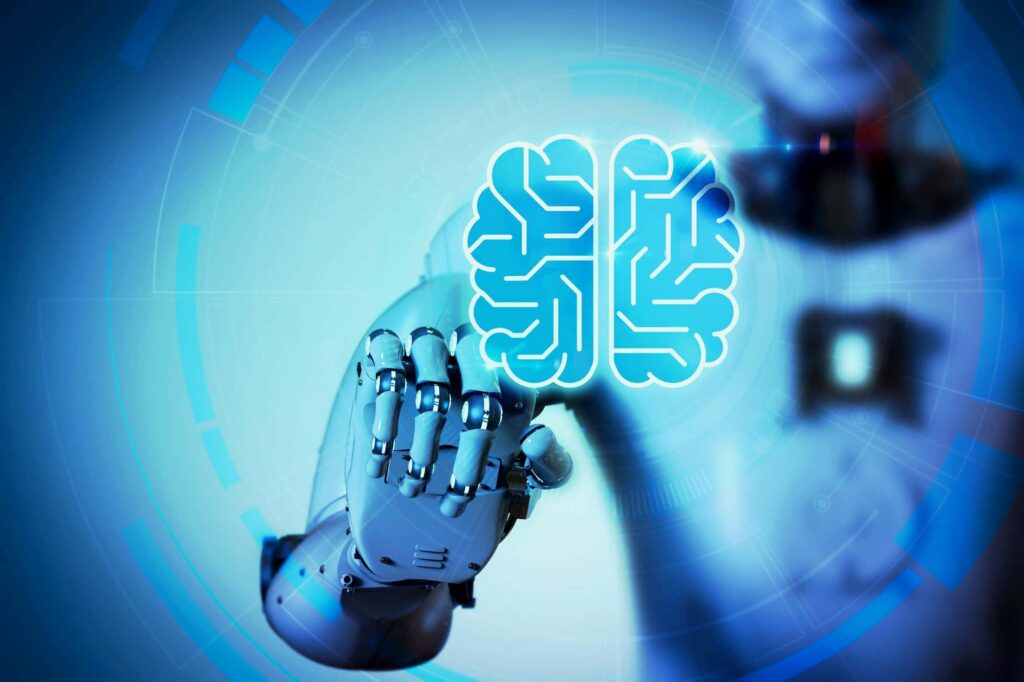
According to industry leaders, the artificial general intelligence (AGI) is capable of equaling or surpassing human cognition in several tasks, and could become a reality in less than a decade.
Google DeepMind CEO Demis Hassabis has said that human-like AGI systems could emerge between 2025 and 2030, highlighting both their transformative potential and the existential risks involved.
Similarly, OpenAI CEO Sam Altman has stated that the company is focusing its efforts on developing “superintelligence,” a form of AI that significantly surpasses human intelligence.
Yes, thanks to this technological evolution. Although it mainly involves computer science, AI is a multidisciplinary area which encompasses studies of:
- Mathematics;
- Statistic;
- Engineering;
- Psychology;
- Philosophy.
It all started when mathematicians and philosophers wondered about the possibility of creating machines that could think and act like human beings.
In 1950, Alan Turing published an article in which he proposed the concept of a universal machine capable of performing any calculation described by an algorithm.
In fact, he was responsible for developing the Turing Test, which consists of checking whether a machine can impersonate a human in a conversation.
Today, the method is still used as a criterion to evaluate the capacity of some autonomous systems such as chatbots.
Since then, AI has been evolving and diversifying into different concepts and techniques that allow systems to perform increasingly complex and varied tasks.
How does artificial intelligence actually work?

THE Artificial Intelligence works through algorithms, which are sets of rules and instructions that define how a system should perform a certain task.
But what does this look like in practice? To explain, let's use the example of social media.
You’ve probably heard of social media algorithms. They’re an automated data collection system that uses AI.
By combining this process with data analysis, it is possible to establish the order in which posts appear in the feed of user.
AI algorithms can be based on:
- Logic;
- Search;
- Optimization;
- Apprenticeship;
- Reasoning;
- Planning;
- Knowledge representation.
What is Artificial Intelligence capable of doing?
This technology is capable of performing activities that were previously restricted to humans or that required a lot of time, cost and effort. Among them:
- Voice recognition;
- Computer vision;
- Data analysis;
- Entertainment;
- Preparation of a complete plan;
- I work with robotics;
- Work in the health sector;
- Working with arts, communication and creativity;
- Process automation;
- Scientific research;
- Creation of innovative processes.
Types of Artificial Intelligence
There are different ways to classify the types of Artificial Intelligence, according to the level of complexity, scope and autonomy. One of the most common ways considers the following criteria:
Weak or limited
The weak or limited version of AI is the one thatable to perform just one specific task, within a restricted domain, following pre-defined rules.
In practice, it does not understand what it is doing, nor can it do other things than what was programmed. Most of the AIs we use today are of this type, such as:
- Voice recognition systems that transform what we say into text or commands, such as Siri, Alexa and Google Assistant;
- Computer vision systems that recognize objects, faces and scenes in images and videos, such as Face ID, Google Photos and TikTok;
- Data analysis systems that extract information and patterns from large data sets, such as Excel, Power BI, and Tableau.
General
On the other hand, the general form of this technology is one that is capable of performing any task that a human can do, in any domain, with autonomy, flexibility and adaptability.
This type of AI understands what it is doing and can even learn and create new solutions.
This is because it has awareness, understanding, generalization and creativity.
However, she doesn't exist yet. Despite this, it is the goal of many researchers and projects, such as OpenAI, DeepMind and SingularityNET.
Super
Super Artificial Intelligence is quite controversial and, perhaps, you have already seen some urgent warnings about it.
This type of AI can surpass humans in everything, in any area, with speed, precision and efficiency. She has awareness, understanding, generalization, creativity and self-improvement.
It's that AI from science fiction movies that we fear so much in childhood and adolescence. It doesn't exist yet, but it is the fear of many experts and philosophers, such as Stephen Hawking, Elon Musk and Nick Bostrom.
Machine Learning
It is an Artificial Intelligence technique that allows systems to learn from data, without the need for explicit programming. It can be divided into three main categories:
- Supervised Learning: when systems learn from labeled data, that is, data that already has the right answer. Example: a system that learns to recognize cats and dogs in photos from a set of images of these animals;
- Unsupervised Learning: when systems learn from unlabeled data, that is, data that does not have a right answer. Example: a system that learns to group customers into profiles from a data set that has no information about them;
- Reinforcement Learning: when systems learn from their own experience, that is, from interaction with the environment. Example: a system that learns to play chess from a set of rules and win or lose feedback.
Natural Language Processing
Finally, we come to natural language processing, a technique that allows systems understand, generate and manipulate texts and speak in human language.
It is used in several applications, such as:
- Recommender systems, which are systems that can suggest products, services or content, based on user preferences and behavior, such as Netflix, Spotify and Amazon;
- Chat systems, which are systems that can chat with the user or with other systems, using text or voice, such as WhatsApp, Telegram and Discord.
- Education systems, which are systems that can teach or learn from the user, using text or voice, such as Duolingo, Khan Academy and Coursera.
What are the 10 most used AIs in the world?
As you can see, Artificial Intelligence is increasingly present in our daily lives.
day. There are several solutions that stand out for their popularity, functionality and innovation.
A study by WriterBuddy, an AI-assisted writing platform, ranked the ten most used solutions in the world, according to estimated traffic in 2023. Check it out:
- ChatGPT (14.6 billion hits)
- Character.ai (3.8 billion)
- QuillBot (1.1 billion)
- MidJourney (500.4 million)
- HuggingFace (316.6 million)
- bard (242.6 million)
- NovelAI (238.7 million)
- CapCut (203.8 million)
- JanitorAI (192.4 million)
- CivitAI (177.2 million)
AI integration with no-code programming
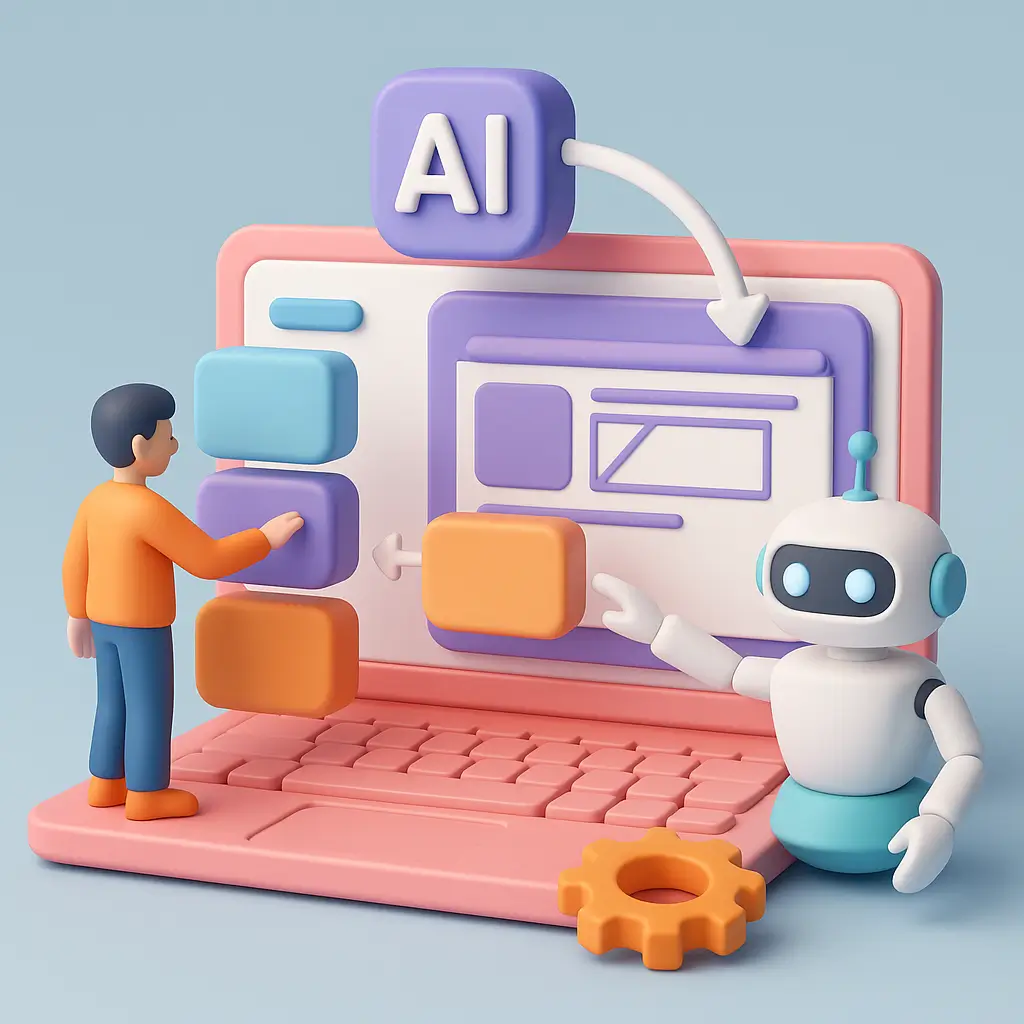
The no-code programming is a way to develop softwares without the need to know how to program. In it, we only use visual tools, such as blocks, and drag and drop commands.
no-code allows people without technical knowledge to create applications, websites, systems and solutions, in a quick, easy and cheap.
This integration with codeless programming offers advanced functionalities and resource savings. In addition, it directly contributes to the continuous improvement of systems.
The main advantages of this combination are:
Automated design generation
Automated design generation is a technology that creates graphical interfaces and layouts, colors, fonts and other resources automatically, based on pre-established data. It is used by tools such as webflow and Wix.
More agility equals more productivity
With the agility that Artificial Intelligence brings, it is possible to reduce the production time and cost of no-code systems.
AI contributes to agility by allowing the system to learn from data, improve with feedback, update with trends, and customize with preferences.
Greater efficiency
Efficiency is a fundamental factor for the success of any project, as it guarantees the customer and user satisfaction, trust and loyalty.
Artificial Intelligence increases efficiency by helping the system optimize processes, correct problems, prevent risks and improve results.
Rapid prototyping
Anyone who already works with the development of softwares knows that creating prototypes is an essential and common step.
It also facilitates rapid prototyping as it is capable of generate the code, design, interface and functionality automatically.
Automated documentation
Furthermore, with AI it is possible to have all documentation automated through a system that processes, analyzes and synthesizes texts, in any language.
This can be done using natural language processing techniques, semantic analysis, machine translation and text generation.
Competitive advantage
Have you ever stopped to think that Artificial Intelligence could be the little push you needed to differentiate yourself in the market?
With it it is possible create new and better solutions, which are more intelligent, personalized, interactive and creative.
Economy
Automated solutions like AI contribute to cost reduction with infrastructure, maintenance and operation, as it reduces failures and speeds up processes.
Constant improvements
AI contributes to the continuous improvement, as it incorporates new functionalities, resources and benefits that increase the quality, efficiency and innovation of the product.
How can she do this? Through data systems, feedback and market trends.
Become a no-code developer right now!
Now that you know all the details about this technology and how it can help in no-code development work, it is even easier to imagine a career in this area.
Want to know where to start? Learn how to develop apps with free Bubble course from No-Code Start-Up and start your developer journey today.




